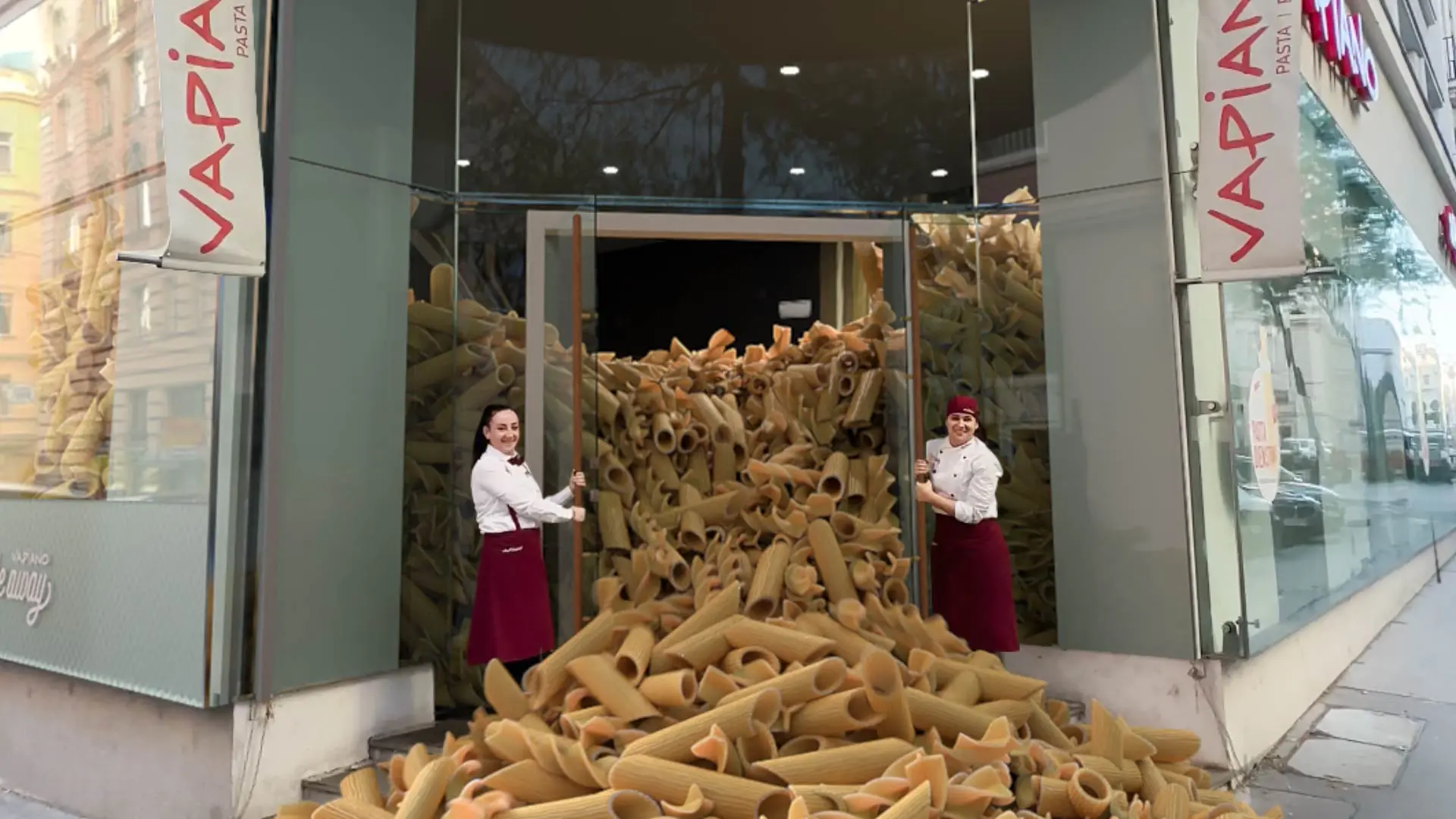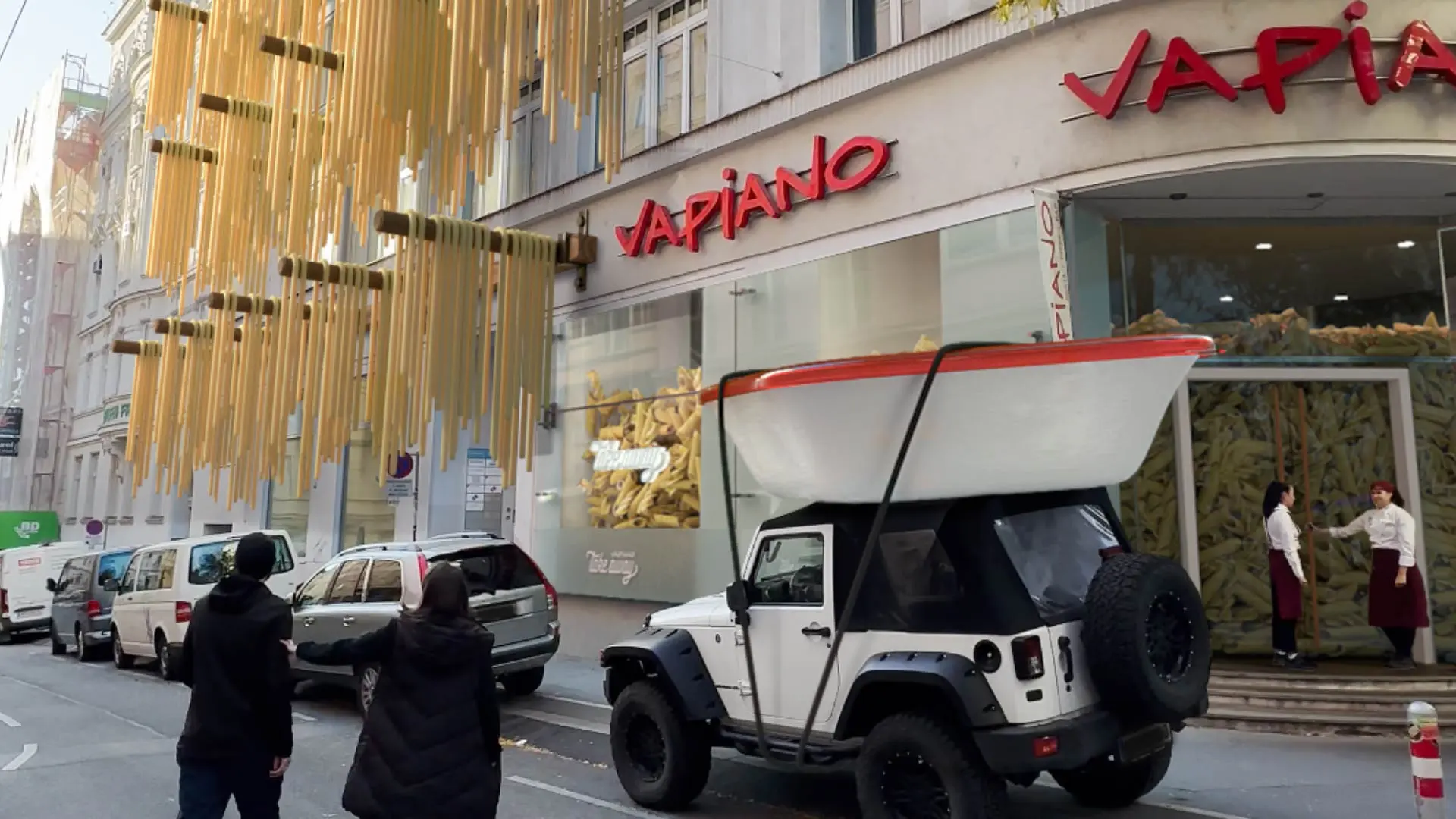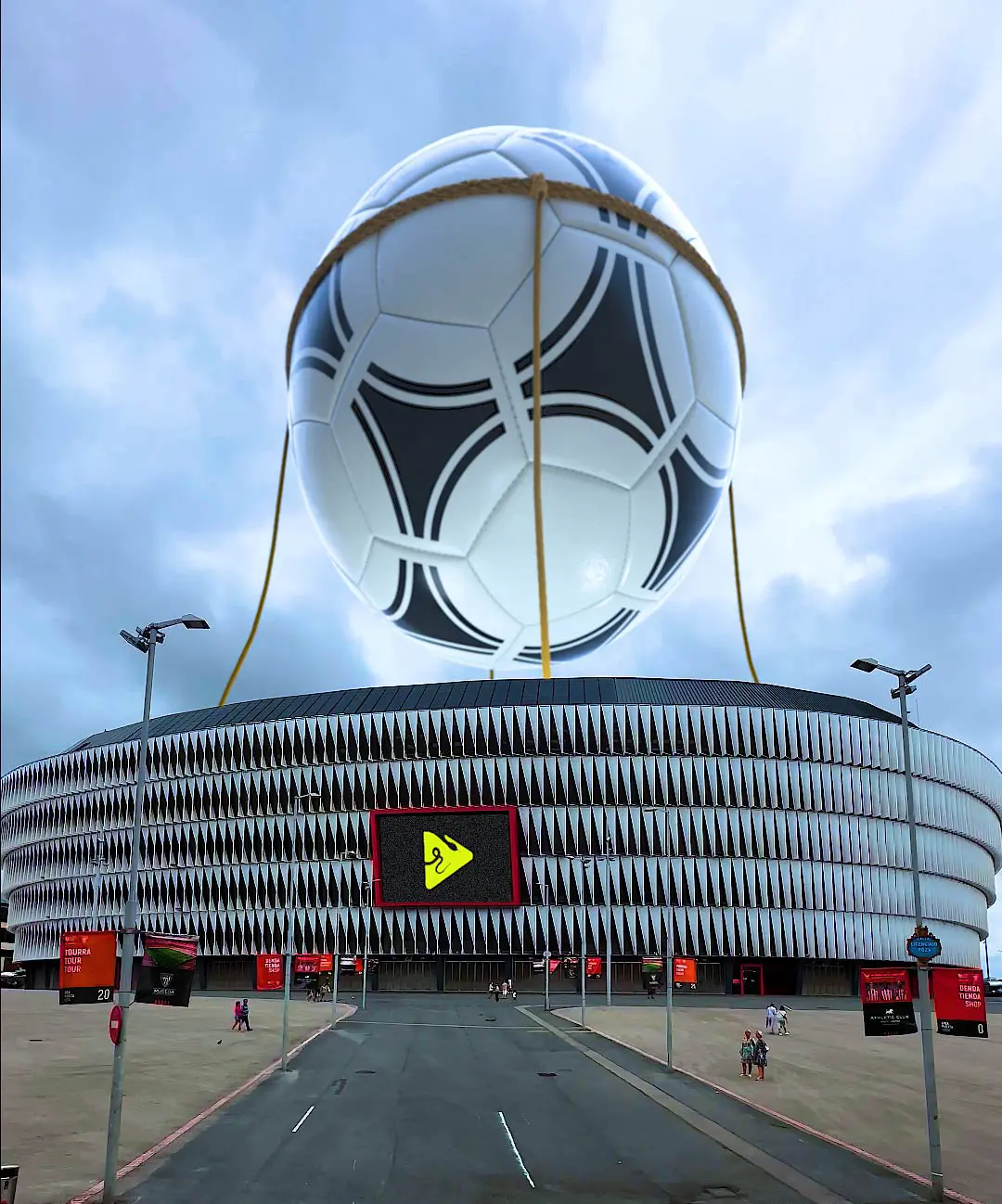If your ads are no longer getting the retention that you need, you might wish to switch up the way you’re doing things.
That’s what Vapiano CGI Video advert did.
The result?
400,000 views within the first few hours.
And that is what made World Pasta Day a moment to remember!
…
Old-fashioned advertising doesn't work well anymore because technology keeps changing. Brands that want to sell things should work with creative agencies that can keep up with new trends.
In today's fast-paced (advertising) world, capturing and holding a viewer's attention has become an art. It's a skill that demands focus, storytelling, and captivating visuals to keep eyes glued to screens.
So, if you’re wanting 2+ mio. unique views on your next advert, maybe the following insights of our project with Vapiano in collaboration with Traktor Wien agency will help.
In one sentence: Consistently showing up on social media.
Especially as a very young company with little connections in the marketing world, it is not easy to find clients. It’s so competitive that you need something unique. Something that shows you care about the work you do - in our case mostly "Fake Out Of Home Videos".
Our social media tactic: posting once a week, interacting with agencies and brands, try new stuff and not just have a portfolio page.
So, showing up on social media eventually lead, Traktor Wien Agency, whos motto is to do advertising for people who actually don’t like advertising, to our Instagram page and that’s how we ended up getting a good old email in our inbox.
After one or two weeks of DMs sharing ideas, a vision for celebrating World Pasta Day took shape. Vapiano's dream of creating an eye-catching advertisement became a reality.
Challenge 1: Attention
Grabbing attention in the first 1.5 seconds is a known fact to everyone who does social media.
Otherwise, attention is gone, and every click or action associated with it is also gone and of course so is the revenue it brings.
So, to grab the attention in the first place, things needed to happen, a lot of things. At first the viewer can spot the car with a gigantic vapiano take away box on the roof. Then you notice two people walking in from the left side, pointing at the facade, which was filled with hyperdimensional spaghetti.
And last but not least, it’s not enough to grab the attention, you also want to hold it. So as soon as the viewer is done with checking out the façade, the two vapianisti are already opening the double door to reveal an avalanche of penne and fusilli.
Challenge 2: Environment
Since the video was shot in a busier street (almos Mariahilferstraße), we already needed to pick a timeframe where there’s little people, but also where we would have a nice lighting. We checkout the place in different times of the day and decided for the morning between 8:00 am and 9:00 am. Everything seemed perfecet on the day of the shooting, but there is always something that you don’t have influence on. In our case that bulky jeep, that was parked in front of the building. Which was of course not exactly what we wanted when we first started filming.
Whilst it wasn’t ideal, we had to use our surroundings to our advantage and create storyboards based on everything around us – this is how we came up with the gigantic takeaway box infront of the building.
Challenge 3: Food
As already mentioned, the probably biggest challenge was to stage the food in a way, that the viewers first thought isn’t – “yuck, there’s food on the street”.


And so, we had to ensure that the fusilli-penne-avalanche simulation looked appetizing, which already was a challenge, because nobody ever saw a pasta avalanche of this size.
Challenge 4: Actors
The last challenge was the human challenge, because when you shoot the video, nothing is there yet. The actors need to understand what will happen in the after production and where everything will be placed. So it’s crucial to have a very detailed idea of what will happen, because you can change pretty much everything in the video, but the reaction of the humas to it is something that can’t be changed.
Our guess is a combination of the many impressions the viewer already has in the first 2 seconds, plus the fact that nobody had ever seen a scene like that before. A fun, entertaining video that invited people to come to the restaurant. It didn’t even feel like an ad.
Rendersnek's collaboration with Traktor Wien Agency for Vapiano's World Pasta Day campaign is a prime example of how CGI can be effectively integrated the advertising industry.
As the world of advertising evolves, standing out becomes crucial. It is understanding what captures attention and keeps viewers engaged that helps to make purchase decisions.
The combination of CGI, reality and attention to detail can turn an everyday scene into a spectacle.
As the lines blur between reality and CGI, this project exemplifies the boundless creativity of the advertising world, turning the ordinary into the extraordinary.
In a world inundated with information, clarity is a prized commodity. Brands often grapple with the challenge of conveying complex ideas in a digestible manner. Enter 3D animation and explainer videos, the unsung heroes of clear communication.
The Rise of Animated Content
3D Animation has come a long way from being just a medium for children's entertainment. Today, it's a powerful tool for brands across industries. The beauty of 3D animation lies in its versatility. It can simplify intricate concepts, making them accessible to a broader audience.
Explainer Videos: A Deep Dive
Explainer videos, as the name suggests, are short videos that explain a product, service, or concept. They combine visuals, narration, and often music to convey a message succinctly.
For instance, a tech company launching a new software might use an explainer video to showcase its features and benefits. The video could use animations to demonstrate how the software works, breaking down its complexities.
The Benefits of Simplification
Using 3D animation and explainer videos offers multiple benefits:
In Conclusion
In the age of information overload, simplification is the key to effective communication. 3D animation and explainer videos are invaluable tools in this quest, helping brands convey their message clearly and compellingly.
The digital age has brought forth a myriad of innovations, and among the most transformative are CGI and Mixed Reality. These technologies, especially CGI Compositing, have redefined the boundaries of content creation, offering unparalleled opportunities for storytelling. But what makes CGI Compositing stand out in the vast sea of digital innovations?

Computer-Generated Imagery, or CGI, has revolutionized the way content creators visualize their ideas. It allows for the creation of visuals that transcend the constraints of reality. From the fantastical landscapes we see in movies to the hyper-realistic product demonstrations in advertisements, CGI offers limitless possibilities. The real magic of CGI lies in its ability to immerse the audience, making them forget the distinction between reality and fiction. With the rise of Mixed Reality Videos, products can now be placed in virtually any environment, blurring the lines between the real and the virtual.
While CGI offers an escape from reality, Mixed Reality (MR) seamlessly blends the real and virtual worlds. MR creates interactive environments where physical and digital objects coexist, enhancing user experiences and making them more immersive and engaging. For brands, this means a unique opportunity for storytelling, allowing them to craft interactive narratives where users can actively participate, forging a deeper connection with the content.
2023 marked the emergence of "Fake Out Of Home advertising" or Fake OOH. These are essentially Mixed Reality Videos that combine real footage with computer-generated imagery (CGI). In simpler terms, it's about tracking 3D objects in conventional videos. While the concept of CGI isn't new (Hollywood has been using it for decades), its application in advertising, especially in the form of Fake OOH, is gaining traction. Brands are leveraging this technique to create ads that stand out and go viral organically, especially on platforms like TikTok and Instagram.
The potential of CGI and MR is undeniable. However, they come with their set of challenges. High-quality CGI and MR content require significant resources, both in terms of technology and expertise. Striking the right balance between reality and virtual elements is crucial to ensure the content remains relatable and authentic. The debate around the authenticity of CGI in advertising continues, but what's clear is that its success depends on execution, brand alignment, and audience engagement.
Innovations like CGI and Mixed Reality are blurring the lines between reality and imagination. For content creators, these tools offer an exciting playground to experiment and innovate, pushing the boundaries of storytelling. As the digital landscape evolves, CGI Compositing will undoubtedly play a pivotal role in shaping the future of content creation.